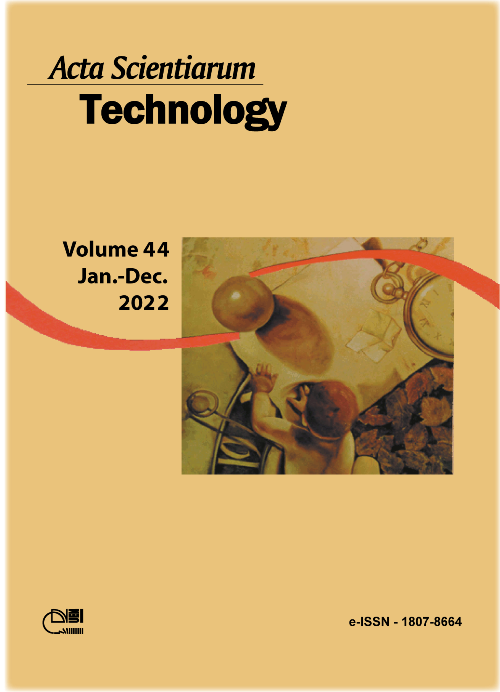Influence of culture medium on growth and protein production by Haematococcus pluvialis
DOI:
https://doi.org/10.4025/actascitechnol.v44i1.59590Palavras-chave:
biomass; mixotrophic; nutrients; photoautotrophic.Resumo
Proteins from microalgal biomass have become promising raw materials in several industrial segments. To evaluate growth performance and protein production under different nutritional conditions, Haematococcus pluvialis was grown in different culture media: BBM, RM, BG-11, and KM2. The cultures were inoculated at 105 cells mL-1, and submitted to a temperature of 24°C, in a continous photoperiod and irradiance of 40 µmol photons m-2 s-1. The highest cell density was observed when H. pluvialis was maintained in BG-11 medium (142 ± 30 í— 104 cells mL-1), but no statistical difference was observed when comparing the results with those obtained when culturing this microalga in BBM (101 ± 14 í— 104 cells mL-1) and RM (105 ± 5 í— 104 cells mL-1) media. Also, the lowest cell density was found when cultivating H. pluvialis in KM2 medium (57 ± 9 í— 104 cells mL-1), and there was no statistical difference for doubling time, growth rate and specific growth rate results between treatments. In addition, higher protein contents in H. pluvialis were reported for RM, BG-11, and KM2 culture media at 55.1 ± 5.6, 49.3 ± 3.6 and 58.4 ± 2.8%, respectively; and lower protein content was found using the BBM medium (31.1 ± 2.9%). The highest cell density and biomass were achieved at greater nitrogen availability and a higher nitrogen to phosphorus ratio. The results suggest that H. pluvialis is a potential species for protein production, and that BG-11 is the most suitable medium for growing this microalga as it allowed the achievement of highest biomass production and protein content among the media evaluated.
Downloads
Referências
Downloads
Publicado
Como Citar
Edição
Seção
Licença
DECLARAÇíO DE ORIGINALIDADE E DIREITOS AUTORAIS
Declaro que o presente artigo é original, não tendo sido submetido í publicação em qualquer outro periódico nacional ou internacional, quer seja em parte ou em sua totalidade.
Os direitos autorais pertencem exclusivamente aos autores. Os direitos de licenciamento utilizados pelo periódico é a licença Creative Commons Attribution 4.0 (CC BY 4.0): são permitidos o compartilhamento (cópia e distribuição do material em qualqer meio ou formato) e adaptação (remix, transformação e criação de material a partir do conteúdo assim licenciado para quaisquer fins, inclusive comerciais.
Recomenda-se a leitura desse link para maiores informações sobre o tema: fornecimento de créditos e referências de forma correta, entre outros detalhes cruciais para uso adequado do material licenciado.



















